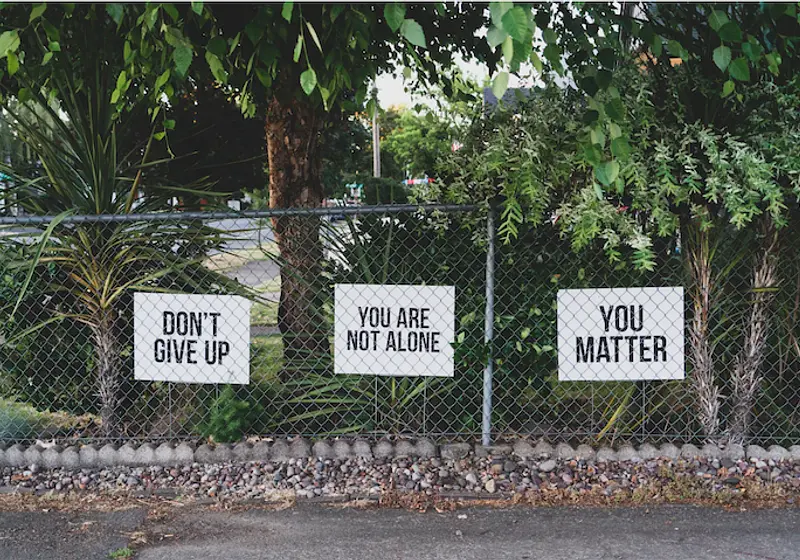The USC Speak Your Mind challenge has gone viral over the past few weeks, especially among teenagers. Although it’s entertaining to watch friends get dunked with water, what is the actual purpose of this challenge?
History of the Ice Bucket Challenge
Ice bucket challenges aren't unfamiliar to us; they’ve come and gone, each time serving a different purpose. The challenge involves pouring ice water over a person's head to raise awareness.
One notable example was the ALS Ice Bucket Challenge in 2014, which aimed to promote awareness of amyotrophic lateral sclerosis (ALS), also known as motor neuron disease. It ultimately raised over $115 million worldwide. The recent Speak Your Mind Challenge is a replication of it, this time focusing on mental health.
The current USC trend began with the Mind Club at the University of South Carolina in collaboration with the nonprofit Active Minds. It started in late March and has since spread to many groups of individuals, uniting them in raising awareness around mental health.
To participate, you simply take part in the challenge, nominate friends, donate, and share your video.

Image Credit: Major Tom Agency from Unsplash
What is the Purpose?
The Speak Your Mind Challenge aims to raise awareness in support of suicide prevention, break the stigma surrounding mental health, and promote mindfulness. This cascade of participation ultimately seeks to drive more donations to continue the mission of Active Minds.
Why Water & Ice?
Although the challenge doesn’t explicitly explain why ice and water are used, we can interpret their meaning by looking at previous awareness challenges.
1. Viral Impact & Visibility
Being voluntarily dumped with a huge bucket of ice is a dramatic act that easily grabs attention. Once people’s attention is caught, many are compelled to look into the purpose behind the challenge. Unlike a simple repost or story share on social media, this kind of eye-catching participation makes the cause harder to ignore and increases its reach.
2. Accessibility & Community
Everyone has access to water and ice, which makes the challenge inclusive. You could use a trash can, a recycling bin, whatever’s available, because ultimately, it’s easy to do. This level of accessibility allowed the trend to spread across continents, from Europe to Asia. Additionally, each challenge usually involves at least two other people helping with the process, which strengthens a sense of community and further amplifies mental health awareness.

Image Credit: John Cameron from Unsplash
3. Discomfort
While the connection is open to interpretation, the discomfort caused by the Ice Bucket Challenge may encourage more conversations around mental health. The act of stepping out of one’s comfort zone to support the cause advocates for the importance of mental health and helps normalize its presence in everyday lives.
Is this Challenge Making a Difference in Mental Health Conversations?
One of the main challenges this movement faces is that many participants don’t fully understand what it’s actually about. While the Ice Bucket Challenge was created with positive intent, its original message can get lost as it spreads. It also raises questions about its lasting impact, as many people seem to be participating just for fun or to be part of a social trend. The challenge itself is momentary, and like most trends, it has gradually started to fade.
Despite this being the case for many, the challenge has still made a meaningful difference.

Image Credit: Aman Krishna from Unsplash
Some individuals have taken the time to engage with the topic of mental health and have even donated to the cause. From March up until now, over $240,000 has been raised for the nonprofit Active Minds. As more people participate, conversations surrounding mental health, to some degree, reignite across communities.
So...Where Are All the Donations Going?
Active Minds mobilizes youth & young adults to transform mental health norms across society.
The nonprofit, Active Minds, works to improve mental health awareness and education among young adults. They aim to destigmatize perceptions around mental health and empower young people. Active Minds is recognized as the largest nonprofit organization in the United States dedicated to mobilizing young adults to transform mental health norms.
There are currently 600+ student-led chapters of Active Minds in high schools and universities, impacting millions of students. Students in these clubs organize events and educate their peers about mental health. Active Minds provides them with templates and resources to strengthen their efforts. Currently, the organization also offers a network of trained speakers on various mental health topics, advocates for mental health policy at the federal level, and collaborates with K–12 schools.

Image Credit: Marcel Strauß from Unsplash
Should You Participate?
Though the impact you make, or the person you nominate, might seem trivial, it helps keep the challenge going and increases the chances that it will reach someone who can donate or take further action.
Mental health is something that always deserves reinforcement. No matter the form of the challenge, the ultimate goal remains the same: to destigmatize mental health and amplify its importance as anyone, at any time, might be going through something.
Read more about Active Minds and their mission here: https://www.activeminds.org/














